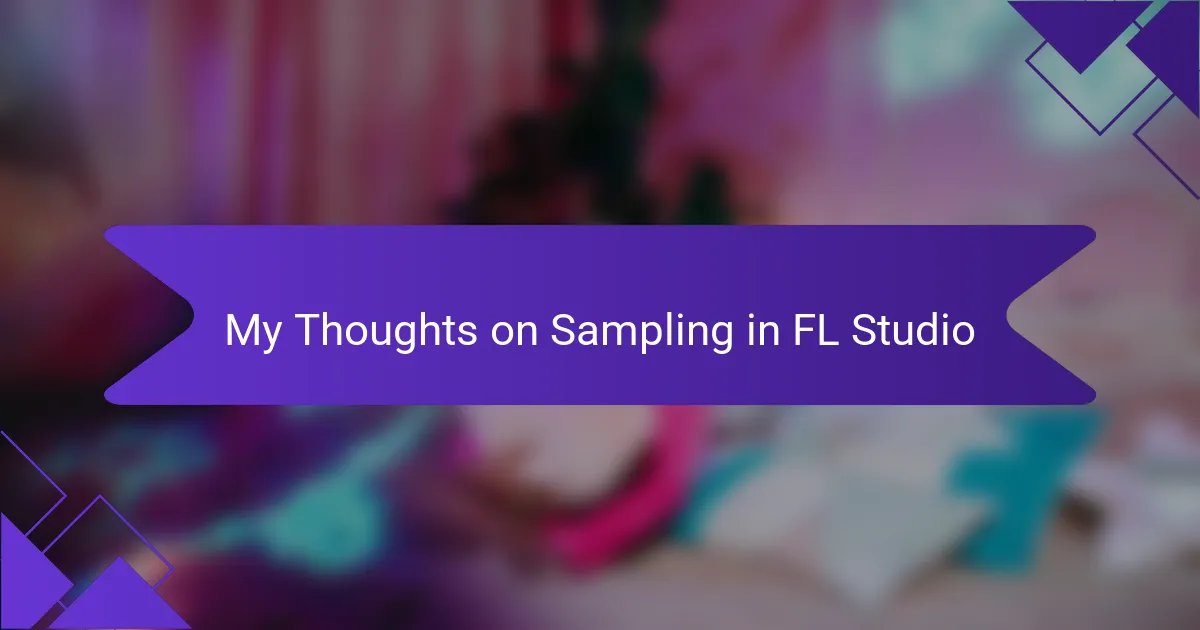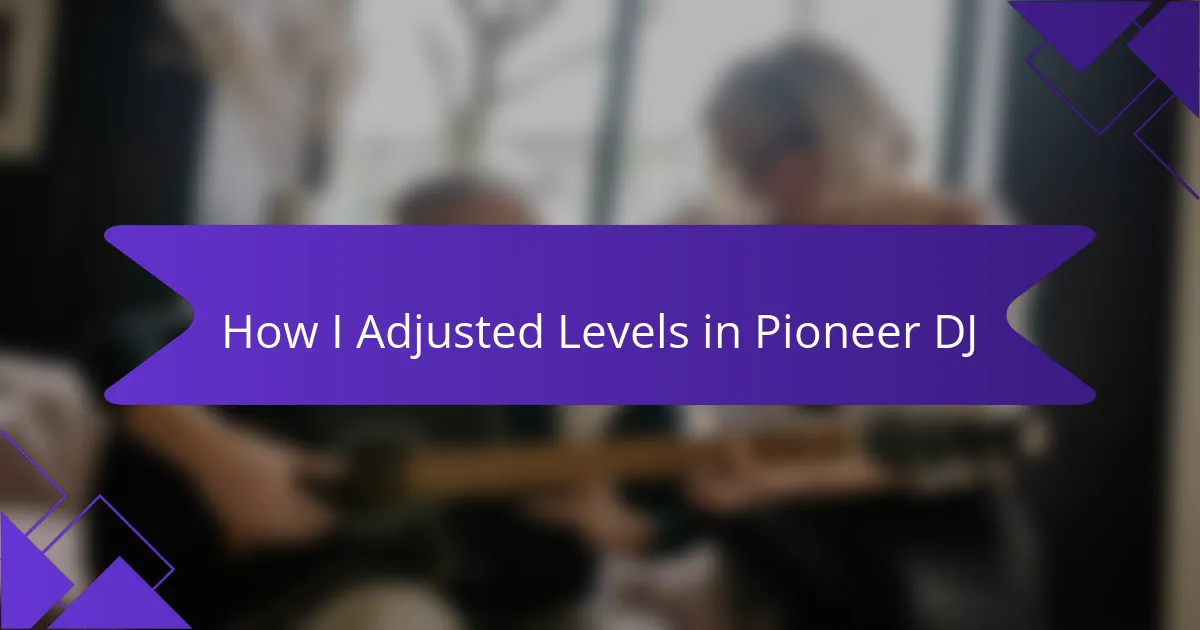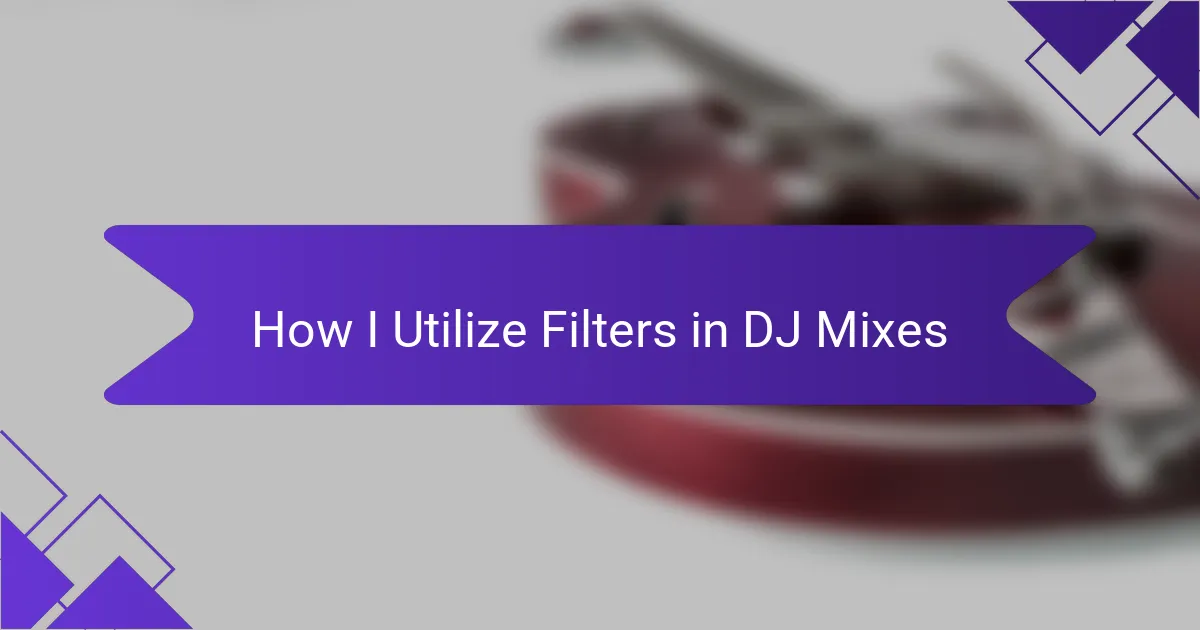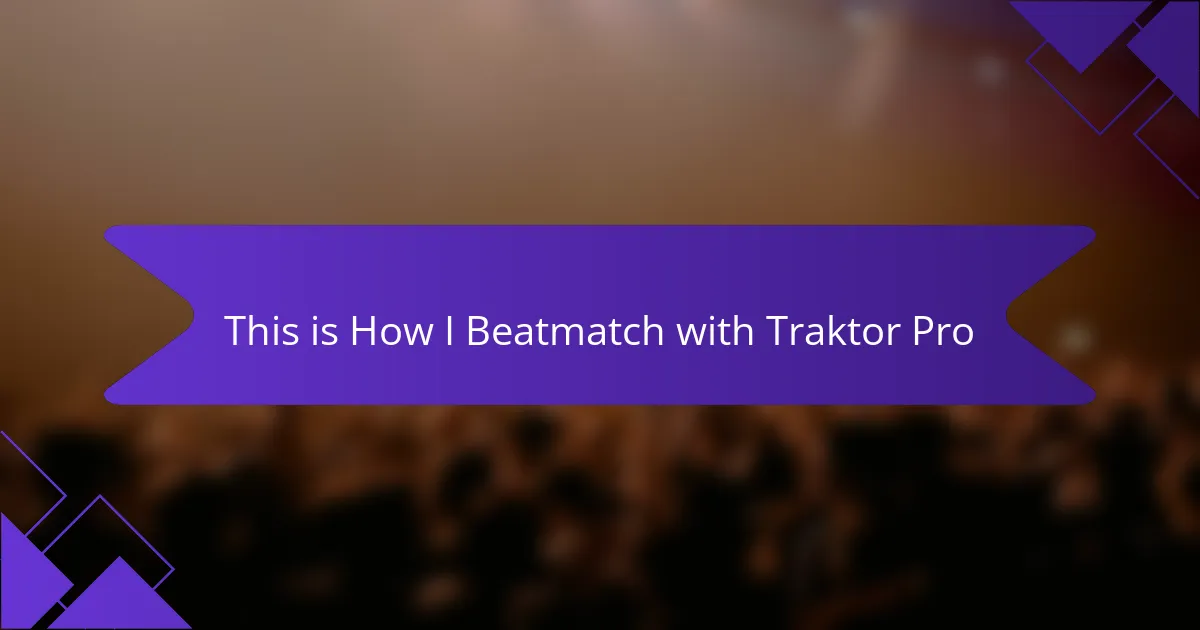Key takeaways
- Vintage DJ gear offers a rich, warm sound and a tactile user experience that many modern devices lack.
- Mixing techniques play a crucial role in enhancing the atmosphere of events and creating memorable performances.
- Combining vintage and modern equipment allows for unique sonic possibilities and fosters creativity in mixing.
- Compatibility between old and new gear is vital for optimal performance, requiring careful consideration of connectivity and operational workflow.
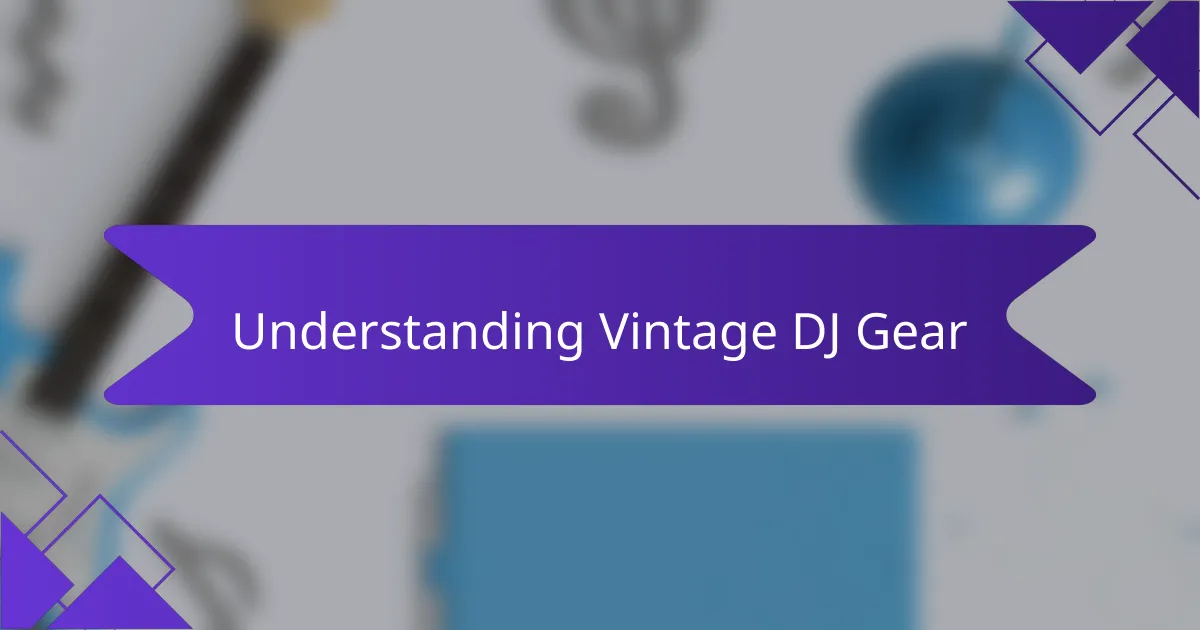
Understanding Vintage DJ Gear
Vintage DJ gear holds a certain allure that few can resist. From the warm sound of vinyl to the tactile experience of classic mixers, using this equipment creates an immediate connection to the past. I remember the first time I spun on an old Technics turntable; it felt like stepping into a different era, where every track had a richer depth.
When mixing with vintage gear, you often experience a unique sonic quality that modern equipment sometimes lacks. These machines were built with a meticulous approach, prioritizing craftsmanship that many contemporary devices seem to forego. I find that the blend of nostalgia and authenticity truly brings the soul back into the music.
Here’s a comparison of some classic vintage gear versus modern alternatives:
| Feature | Vintage Gear | Modern Gear |
|---|---|---|
| Sound Quality | Warm, rich sound | Clear, sometimes sterile |
| Build Quality | Heavy-duty, reliable | Lightweight, portable |
| User Experience | Tactile, hands-on | Digital, more automated |
| Nostalgia Factor | High | Variable |

Importance of Mixing Techniques
Mixing techniques are the backbone of any DJ’s artistry, especially when harnessing the charm of vintage gear. I remember the thrill of blending tracks live with an old rotary mixer; each twist and turn felt like sculpting sound rather than just pushing buttons. This hands-on approach not only enriches the overall performance but also allows for a deeper connection to the music being played.
When I dive into mixing, I notice how the nuances of my technique shine through, especially using vintage equipment. The imperfections and unique characteristics of older gear foster creativity in ways that modern equipment might stifle. Have you ever found yourself in a groove that just doesn’t come back with a digital mixer? That’s precisely the beauty vintage gear offers; it makes every mix an adventure with its own story.
Moreover, the importance of mixing techniques extends beyond just the music; it shapes the entire atmosphere of the event. A well-executed transition between tracks can elevate the energy in the room, turning a standard set into an unforgettable experience. In my experience, these moments are what the audience remembers long after the last track fades away, creating lasting memories intertwined with the fantastic sound of nostalgia.
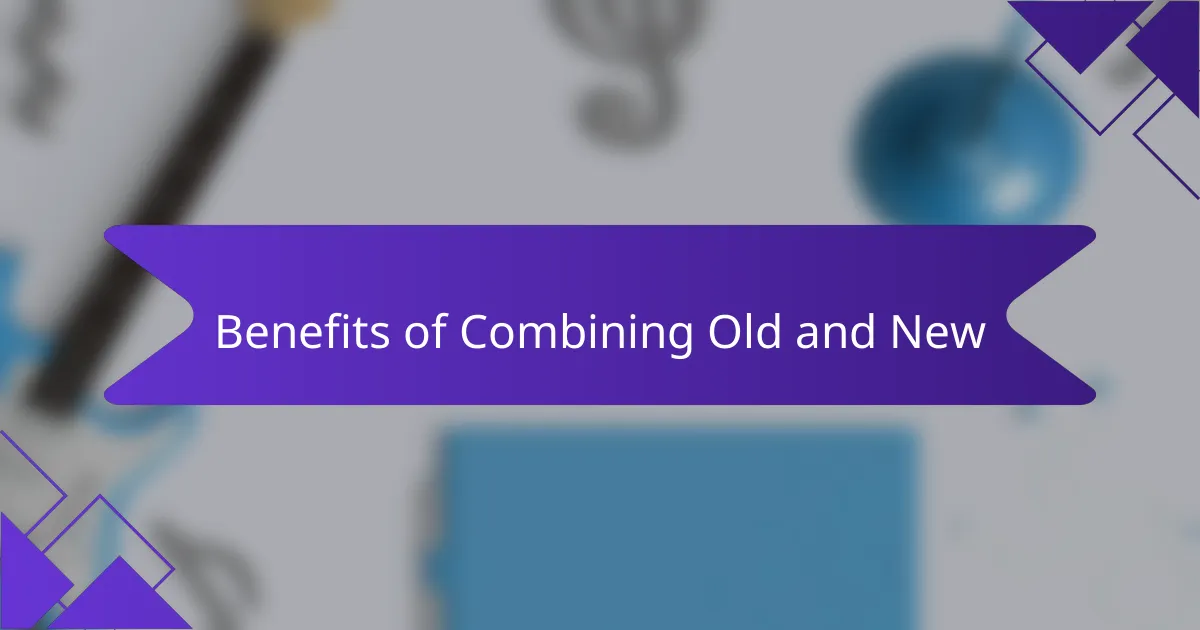
Benefits of Combining Old and New
Combining old and new gear in DJing opens up a treasure trove of sonic possibilities. I remember the first time I paired a vintage turntable with a modern DJ controller; it was like magic. The warm, rich nuances from the vinyl perfectly complemented the crispness of the digital tracks, creating a soundscape that felt alive. Isn’t it thrilling to think how blending these eras can lead to discovering fresh creativity in your mixes?
The tactile experience of vintage gear enriches the modern DJ’s experience in ways that often go unnoticed. I often feel that each knob and fader on my old mixer comes with a story, which prompts me to think more about my selections and transitions. When you’re physically interacting with equipment that demands your attention, it encourages deeper listening and more thoughtful mixing strategies. Have you ever noticed how simply turning a knob can inspire a whole new direction in your set?
Moreover, there’s an undeniable connection that arises when listening to the warmth of older equipment alongside polished digital sounds. It’s like the old and new are having a conversation, each enriching the other. This dynamic can foster an environment where creativity flows more freely, enabling DJs to express their artistry in exciting and unexpected ways. Every time I blend the two, I’m reminded of the rich legacy of music while contemplating the future—what could be more inspiring?
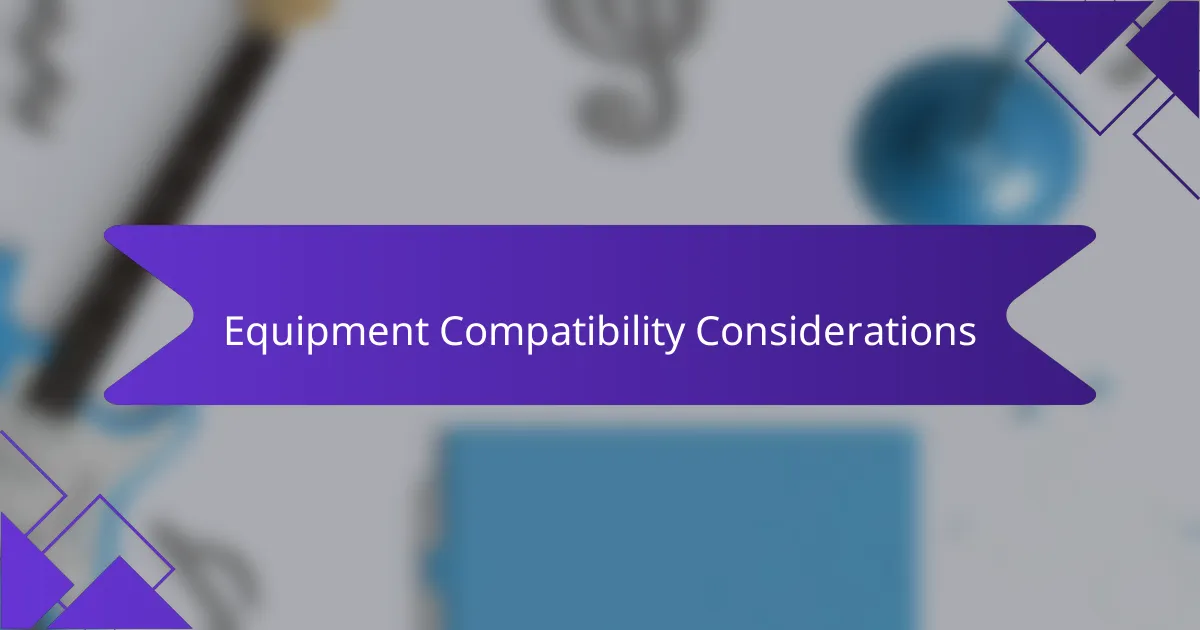
Equipment Compatibility Considerations
When considering mixing vintage gear with modern equipment, compatibility is key. I’ve often found that certain vintage machines may produce a warmer, richer sound, but they can also come with challenging connectivity issues. You might need adapters or specific cables, which can be a hassle but ultimately rewarding when the nostalgic sound kicks in.
Another aspect to consider is the operational workflow. For instance, I’ve encountered modern mixers with effects that simply don’t mesh well with older synths or drum machines. It’s essential to understand how each piece of equipment operates, as this can heavily impact your overall performance.
Here’s a simple compatibility comparison to help you visualize the differences between vintage and modern gear:
| Feature | Vintage Gear | Modern Gear |
|---|---|---|
| Sound Quality | Warm and rich, often with character | Crisp and clean, sometimes sterile |
| Input/Output Options | Limited, often requires adapters | Versatile, typically more inputs/outputs |
| Ease of Use | Often more complex, less intuitive | User-friendly, designed for quick setup |
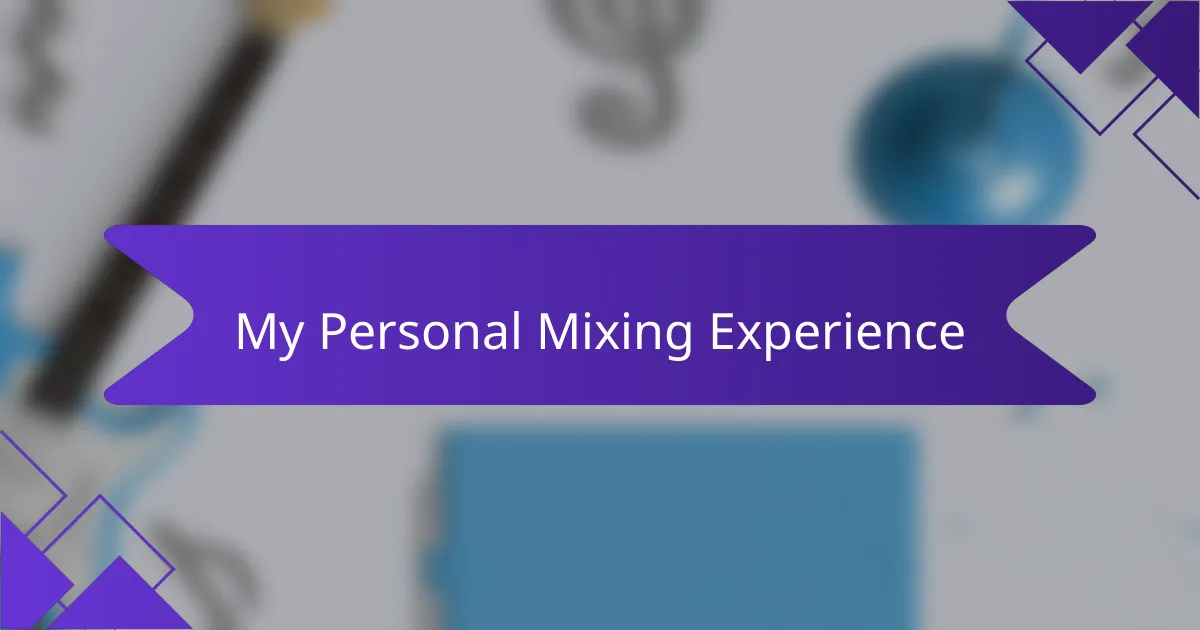
My Personal Mixing Experience
Mixing with vintage gear is one of those experiences that can evoke a flood of memories. I can clearly recall the first time I used a classic vinyl turntable; its weight and feel made every adjustment feel intentional. There’s something almost reverential about setting a needle down on a record—it’s a ritual that adds to the excitement of the music flowing through the room.
I often find myself lost in the nostalgia that vintage gear brings. I remember a particular night at a small gig where I used an old analog mixer. Each fader was like a conversation with the music, and the imperfections in those old circuits added a distinct character that I still treasure. It reminded me that sometimes, the quirks of older technology actually inspire more creativity. Have you experienced how those little flaws can lead to something unexpectedly delightful in your set?
Moreover, the warmth of the sound produced by vintage gear never ceases to amaze me. I once mixed a late-night session using both classic and modern components, and the contrast was striking. The warmth of the vintage records beautifully complemented the crispness of the digital tracks, creating a vibe that felt both nostalgic and fresh. This blend not only cultivated a deeper connection with the audience but also reaffirmed my belief that celebrating the past can ignite the present.
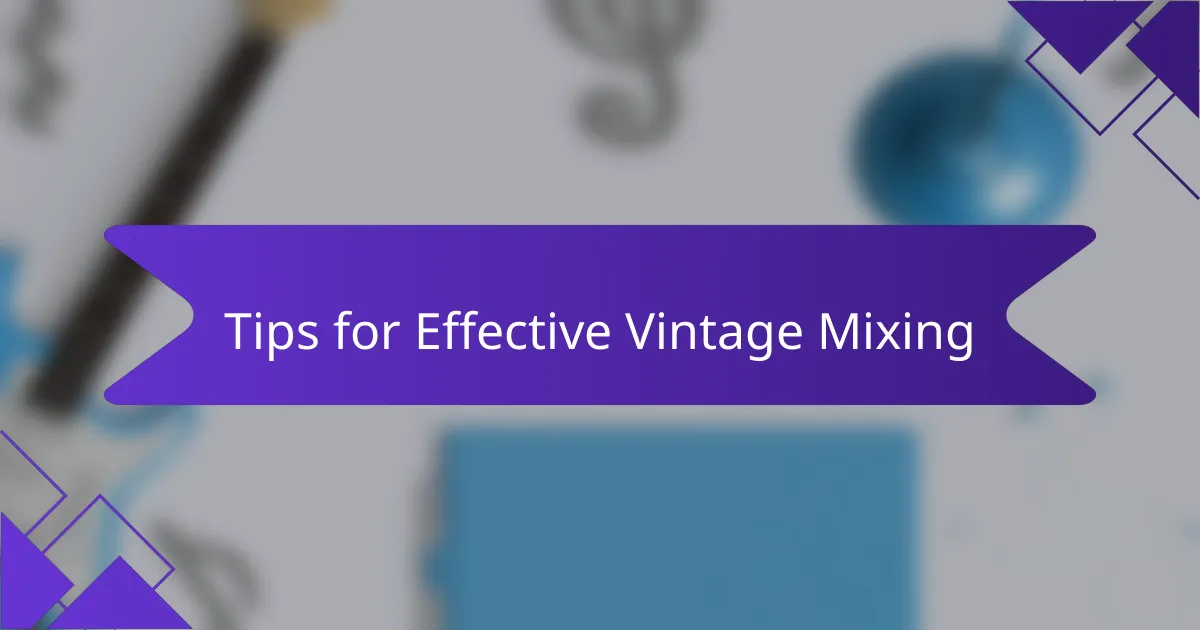
Tips for Effective Vintage Mixing
Mixing with vintage gear requires a blend of patience and creativity. I remember the first time I tried to blend two tracks using an old rotary mixer; it felt like a delicate dance. Each adjustment demanded focus, allowing me to truly listen to the sounds rather than just going through the motions. Have you ever felt that moment when time seems to slow down as you find the perfect blend? That’s what vintage mixing is all about—being present in the moment.
One of my go-to tips is to embrace the quirks of your vintage equipment. I once struggled with a particularly finicky turntable that would occasionally skip. Instead of seeing it as a fault, I learned to incorporate those skips into my set, turning potential mishaps into unique moments. This approach not only added character to my mixes but also reminded me that imperfections can lead to creative breakthroughs. Have you ever noticed how those unexpected moments can sometimes become the highlights of your performance?
Experimenting with effects can also elevate your vintage mixing experience. There’s a certain charm that comes when combining old-school gear with modern effects, each adding its flavor to the mix. I vividly recall layering an old tape echo with a contemporary reverb, and the resulting sound was something truly enchanting. It brought depth and richness that you simply can’t find in a purely digital setup. Have you thought of how blending vintage and modern effects can push your creativity to new heights? It’s a journey worth taking!
